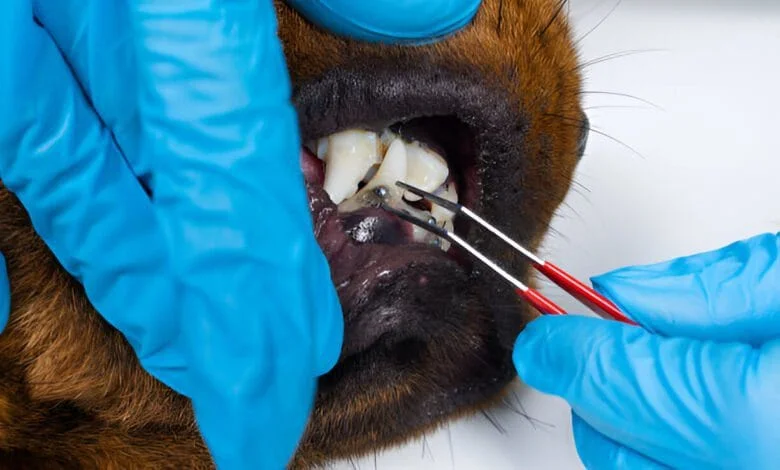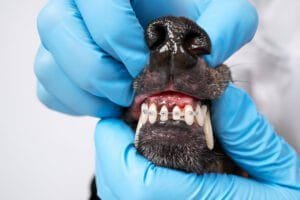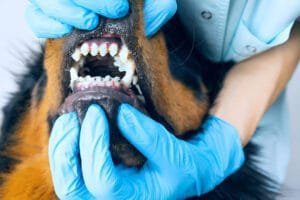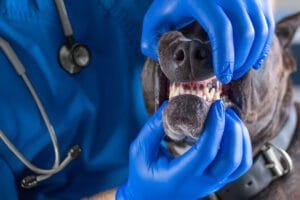Dog Braces Teeth: Signs Your Dog Might Need Orthodontic Help

Canine Orthodontics: A Comprehensive Look at Dog Braces
Introduction
While orthodontics may evoke images of braces, wires and retainers, many people don’t realize that this field of dental care applies to our pets as well. Yes, dog braces really are used to treat certain dental problems. This article will talk about “dog braces teeth” — reading this, you will get to know why these braces are needed, how they work, and what to expect. Whether you’re a devoted pet owner or simply a curious reader, this complete guide will give you an understanding of the realm of canine orthodontics.

What Are Dog Braces Teeth?
Dog braces, or orthodontics, are devices applied to the teeth to correct misalignments and other dental issues in dogs. Similar to that of humans, braces for dogs are made up of brackets and wires that apply constant, gentle pressure to move the teeth into the proper position over time. Yet, dental braces often have more than aesthetic purposes and are mainly focused on health and functionality.
Why Would a Dog Need Braces?
Unlike humans, who often get braces for a perfect smile, dog braces are usually recommended for health reasons. Below are a few of the most common reasons that a dog may need braces:
Malocclusion Malocclusion is the term used to describe misaligned teeth that can lead to issues with chewing, jaw pain or even cuts on the soft tissues of the mouth.
Tooth Rotation Teeth may erupt rotated or crooked in position causing discomfort or functional problems.
Retained Baby Teeth Puppies may keep their baby teeth after the adult teeth come in, resulting in crowding and alignment problems.
Oral Trauma Accidents or injuries may misalign the teeth, and orthodontics may be needed.
Aesthetic Reasons While not as common, some owners may want braces purely for aesthetic reasons, but rarely is this recommended unless its affecting the dog’s overall health.

When Does a Dog Need Braces?
Signs That Can Indicate Dental Problems in Your DogPet owners should pay attention to any signs that may point concerning dental conditions. Signs that might be reason to head to the veterinarian include:
- Problems eating or chewing food
- Drooling excessively
- Bad breath (halitosis)
- Swollen gums or bleeding
- Outward misalignment of the teeth or jaw
Changes in behavior such as behavior to steer clear of specific activities or wince when touched around their mouth
If you see any of these signs, use “dog braces teeth” and contact your veterinarian to confirm that it would be an appropriate solution for your pet.
Bracing on Dogs: Process of Getting Braces for Dogs
Getting your dog braces is a multi-step process beginning with a consultation and ending in routine maintenance. Here’s a closer look at how it happened:
Step 1: Initial Consultation A veterinarian or veterinary dentist will assess your dog’s mouth to determine the issue. In some cases, X-rays and dental impressions are taken to evaluate the teeth and jaw alignment.
Treatment Planning After a diagnosis is established, the vet will draw up a treatment plan based on your dog’s individual needs. This includes picking the type of brace and estimating the time frame for successful dental alignment.
The vet will care the braces on the teeth of your dog with general anesthesia to make it feel comfortable and safe. Braces attach small brackets to your teeth, and connect them with wires.
Regular Adjustments Similar to humans, dog braces must be adjusted regularly to ensure they are functioning properly. These visits are necessary to review progress and make adjustments as required.
After Treatment Care and Maintenance Oral hygiene is extremely important during treatment. Treatment involves regular cleaning, a specific diet and follow-up visits to the vet to ensure the treatment is successful.
Types of Braces for Dogs
There are different types of braces available under the category of “dog braces teeth” based on the specific problem:
Traditional Metal Braces SIMILIAR to the braces used on humans, these consist of metal brackets and wires.
Invisalign-Style Aligners:: Rarely, some patients might use clear aligners for mild cases where full braces aren’t necessary.
Functional Orthodontic Appliances A functional orthodontic appliance is used for orthodontic correction by addressing functional problems such as jaw alignment instead of realigning the teeth individually.
Custom-Made Orthodontic Appliances For some situations, a veterinarian can create custom-made devices that can fix some dental situations.

Benefits of Dog Braces
There are many advantages of investing in ”dog braces teeth” solutions for your pet’s health and quality of life:
Better Oral Health: Straightening misalignments lowers the chances of tooth decay, gum disease, and infections.
Improved Functionality: A dog whose teeth are properly aligned will be able to chew and eat better.
Pain Management: Fixing problems such as malocclusion (misaligned teeth) or temporomandibular joint disorders can be done without invasive surgery, thus preventing problems down the line.
Improved Longevity: A healthy mouth helps support overall health, potentially adding years to your dog’s life.
Challenges and Risks
Although dog braces are helpful, they have some drawbacks and some risks:
Cost Dog braces can be expensive, costing anywhere from $1,500-$5,000 or more depending on the complexity of the case and the type of braces used.
Anesthesia Risks Because the procedure is performed under anesthesia, there is some risk associated with the anesthesia itself, especially in older dogs or those with medical problems.
Maintenance Needs Regular vet check-ups and oral care are crucial for successful treatment.
Stress on Dog The dog wearing braces can put initial stress or strain on dog, which can be overcome with proper patience and care by the owner.
Alternatives to Dog Braces
If your pet cannot have braces, there are.
If a single tooth is a problem, extraction may be the most straightforward option.
Dietary Changes: Canine dental hals can lead to softer or special diet being prescribed for dog if it has some minor issues.
Surgical Fixes: When jaw misalignments are extreme, surgery may be necessary.
Always consult with your veterinarian about the best option for your dog.
the pup: Making Sure Your2023-09627algorithms1
A dog with braces will need some extra care. Here are some tips:
Practice Oral Hygiene Brush your dog’s teeth regularly with vet-approved toothpaste and brushes.
Change Their Diet Avoid hard or chewy foods that may break the braces. Soft food to eat, treats.
Monitor for issues Look for signs of discomfort, like pawing at the mouth, and alert your vet to any concerns as soon as you notice them.
Follow-Up Visits You should attend every follow-up appointment to monitor the progress of the treatment.
Metal Teeth Braces for Adults and Kids: A Comprehensive Breakdown
Dog Braces — The Emotional Side of It
Seeing your dog with braces may seem like an odd sight, but the important thing to remember is that it is all for the best! Help is personal and knowing that you are tackling a critical health issue can provide peace of mind while growing the bond with your furry friend.
FAQs About dog braces teeth
Are dog braces painful?
However, that surgery is not painful because it is performed under anesthesia. However, your pup could be a little uncomfortable during the first adjustment period.
How long do braces need to be worn by dogs?
Duration: The timeline can vary but is usually from a few weeks to several months depending on the severity.
Can all dogs get braces?
Yes, braces are only used if your dog has certain dental problems. Eligibility needs to be confirmed by a full vet assessment.
How much do dog braces cost?
Filing one in a contested case can cost from $1,500 to over $5,000, depending on how complicated the case is.
What is the cost of dog braces?
Side effects are uncommon but can include temporary discomfort, irritation or trouble eating.
Conclusion
These devices can help lift and align your dog’s teeth, giving them a straighter, healthier smile and making them happier in the process! Although the process is not a walk in the park and can be expensive, the rewards usually supersede the drawbacks. If you think your dog would benefit from braces, consult a veterinary dentist to learn about your furry friend’s best option.
When you focus on your dog’s dental care, you’re securing more than just their smile, but their happiness and overall health too.




